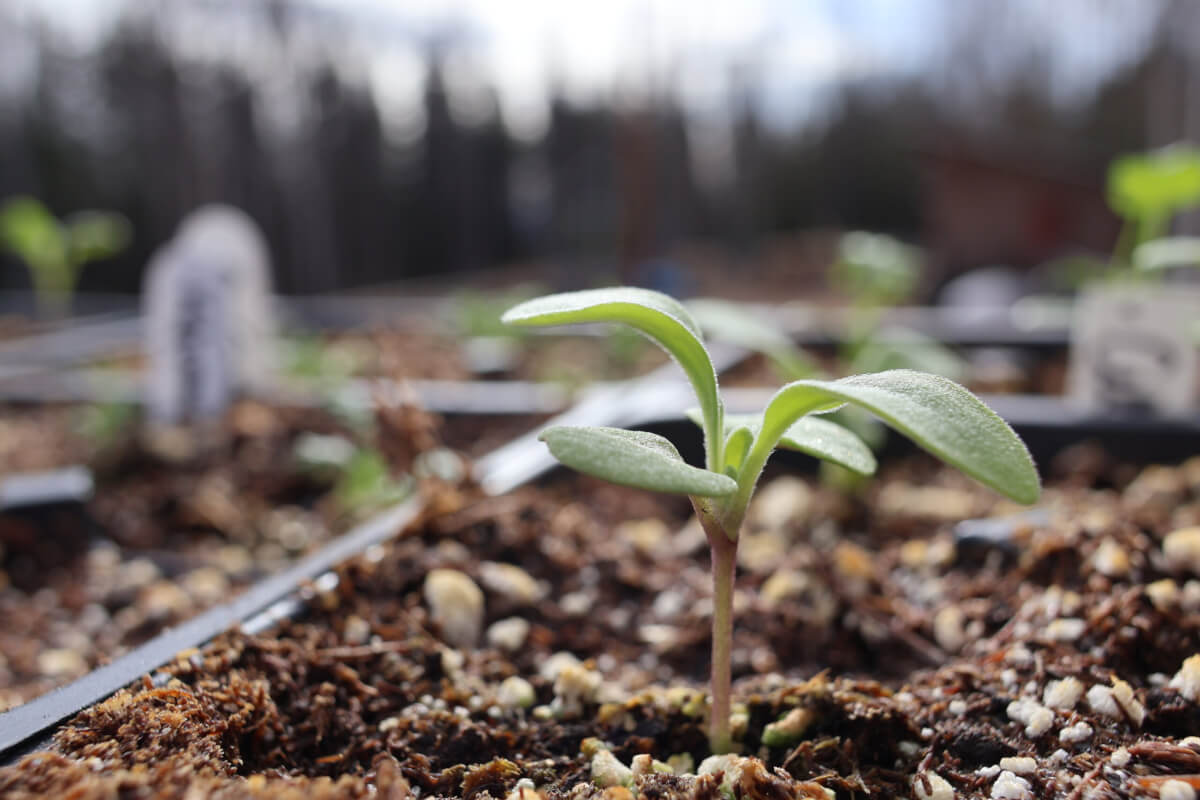So, we had a bit of an “incident” last night that reminded us about an important nuance to understand in cold climate gardening and the temperature tolerance of plants.
We are in the process of hardening off some frost sensitive plants right now, with the intention of getting them out to our greenhouse this weekend. It was a balmy 45 degrees when we started. But, temperatures seriously dipped down to 28F degrees shortly after we began. It happened so quickly and before we knew it, the temps were well below freezing. Our plants were probably exposed to sub freezing temps for better than a couple hours!
Our plants are fine! But, this gives us an opportunity to demonstrate a few important principles from this!
First, it’s not the air temperature that is dangerous to plants! It’s those frosts that are particularly dangerous, that’s what actually can cause immediate tissue damage to the plant’s sensitive greenery. Short exposures, even to sub-freezing temperatures, are rarely all that dangerous to plants when there isn’t accompanying frost. Sure, there is a point where freezing temperatures can damage a plant, but it takes many, many hours (or even never) for this to occur.
Second, air temperature and frosts are not inherently tied together. Frost only occurs when the dew point and outdoor air temperatures are equal. If the air temperatures are above the dew point, which is usually the case, dew (and therefore frost) cannot develop. The point where dew develops most commonly occurs overnight when the air temperatures are coldest. It can happen during the day, but that’s way more common to see in fall (when temps can suddenly drop) and not spring.
Next, the moisture for dew often comes from the soil, not humidity from the air. So, if your soils are relatively dry, dew is less common and therefore so is frost. We can use this to our advantage sometimes after we plant. If you’re expecting a dive into cold temperatures, avoid watering your plants! We often avoid watering our gardens entirely in the late fall harvest, just for this reason! It also works in the spring, in the event temps dive back down after you have plants in the ground.
Lastly, this is why heating your greenhouse to a minimal temperature works to prevent frost in the greenhouse. Again, dew can only develop if the air temperatures are equal to the dew point. Even a single degree above the dew point is sufficient to prevent frost. We do often pick some arbitrary number (like 40F), but this is more about ensuring even ground level temperatures are above that dew point.
This isn’t the first time we’ve attempted to freeze our plants, either intentionally or not. And it’s why growers are focused on frosts, not air temperatures. Many frost sensitive plants can handle some cold temperatures just fine. It’s really those frosts you have to look out for!


